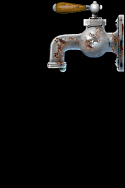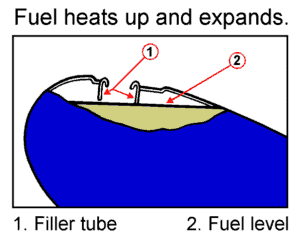 1985/86 Yamaha 700/750 Maxim-X GAS MILEAGE etc... All about Maxim-X gas mileage, fuel capacities & proper fuel/additives. |
||||||||||||
|
||||||||||||
|
For over two years now, I've kept very close track of the fuel consumption of my own 750 Maxim-X. Having filled the tank more than 200 times, I have a pretty good idea how much fuel it takes and how far I'll be able to drive. In over 200+ fills, I've arrived at the following average figures:
• Average distance to reserve - 145 km (90 miles)
• Maximum distance to reserve - 176 km (109 miles) • Maximum distance per tank - 210 km (130 miles) • Least mileage to run dry - 184 km (114 miles) • Maximum fuel fill - 11.564 litres (2.5 Imp. gal., 3.1 U.S. gal.) • Average fuel fill - 9.136 litres (2.0 Imp. gal., 2.4 U.S. gal.) • Average gas mileage - 17.5 km/L (5.7 L/100 km, 49.4 mpg CDN, 41.2 mpg U.S.) • Maximum gas mileage - 23.5 km/L (4.3L/100 km, 66.2 mpg CDN, 55.1 mpg U.S.) I usually drive quite a bit past the point of switching to reserve (determined by loss of fuel supply NOT by the fuel indicator light) but on those ocassions where I filled up within 10km after reaching reserve, these were the fill amounts: 7.403L, 8.498L, 8.250L, 7.906L, 8.550L, 8.300L, 8.887L, 8.746L, 9.012L, 8.868L, 9.197L, 8.788L, 8.830L, 8.847L, 8.489L, 9.246L, 8.973L, 8.391L, 8.522L, 8.412L, 8.240L, 8.285L, 8.568L, 8.975L, 8.917L = 8.604L (1.89 Imp. gal., 2.27 U.S. gal.) average
If it wasn't clear, these numbers represent the fuel volume I used up to the point where reserve was reached which is essentially the main fuel capacity. Maxim-X specifications show the main fuel capacity theoretically to be 10L (2.20 Imp. gal., 2.64 U.S. gal.), but from my own experience, it's obvious that the main fuel capacity is a little closer to 8.5L (1.87 Imp. gal., 2.25 U.S. gal.).  Yamaha likely counts the tank volume above the maximum fill level as part of the main capacity, although drivers are instructed not to fill to full capacity as shown in the picture. Consequently, drivers who are under the impression that they'll achieve 185-193km (115-120miles) before having to switch to reserve are in for a surprise when on their best day, they only achieve 161-171km (100-106miles), about 12% less than spec. To complicate the gas mileage situation just a little more, it appears that the relative MAIN/RESERVE fuel volumes may be a little flexible. I've never actually disected a Maxim-X gas tank to see how the two volumes are kept separate (I'm told it's two pipes at different levels) but judging by the relatively large fluctuations I've seen in distances on MAIN capacity and distances on RESERVE capacity, I suspect that the RESERVE input might not be entirely isolated from the MAIN input... at least not to the degree expected. I'm only speculating here but it seems that fuel can splash from MAIN to RESERVE given enough bumps and turns. I see evidence of this repeatedly because the further I'm able to travel on MAIN, the shorter the distance I can travel on RESERVE and vice versa. Naturally, this makes it difficult to guess just how much further you can drive on what's left. That's why I usually diregard my RESERVE indicator light (which stopped working a while ago anyways) but always keep a close eye on the odometer during long cruises. Over time, I've come to realize that I start to get nervous when I'm "out in the sticks" and my odometer reaches about 180km (112miles). This, of course, is based on a fill to the lower edge of the filler neck. Not long after 180km, the Maxim-X will be sucking wind so I usually don't let it get that far before refueling. If I do reach 180km, refueling becomes my first priority - even if it means putting in gas that the Maxim-X doesn't particularly like. It's also worth noting that while the Maxim-X may still have fuel in the tank (which you can clearly hear sloshing around), that fuel doesn't always keep the bike running near the end. Other Maxim-X owners might also have noticed that when running on fumes the bike coughs and sputters but does continue to run, albeit poorly. I'm not entirely sure why this happens but I do have a theory: Because the Maxim-X feeds fuel by gravity alone, the more fuel you have in the tank the more head pressure in the system to force fuel through the petcock, the fuel lines, the fuel filter and various carburetor restrictions. I suspect that as the fuel level and corresponding fuel pressure drops, it may take fuel just a little longer to accumulate in the float bowls... possibly just a little longer than the X is willing to wait for the fuel it wants to swallow. Remember, that's just a theory. In reality it may be something completely different but the fact remains - the Maxim-X usually begins to experience fuel starvation well before the gas tank is completely empty. I've tried to estimate at what point I first notice fuel starvation but it's difficult to quantify. On one occasion, however, I had the misfortune of running out of gas in the middle of a congested highway, far from any exits. I patted myself on the back for having had an emergency 250mL bottle of gasoline with me that day, but the congratulations were premature. Having added 250mL of fuel to a tank that had just run dry at high speed didn't solve a thing. That quarter litre of fuel wasn't enough to get even a single cough out of the engine despite priming and despite endless cranking. It just seems as if the Maxim-X needs a certain minimum amount of fuel in the tank to provide sufficient fuel pressure to move the fuel through the system efficiently. Apart from the capacities themselves, the rest is very subjective. Maxim-X gas mileage is obviously effected by a lot of variables:
The bottom line - if you want your Maxim-X to get good gas mileage and good performance, after a thorough tuneup, don't buy gas which contains Ethanol, use 89-91 octane fuel only, keep your air filter clean, hope for calm, warm and dry weather, leave your wife and luggage at home and don't be heavy on the throttle. |


